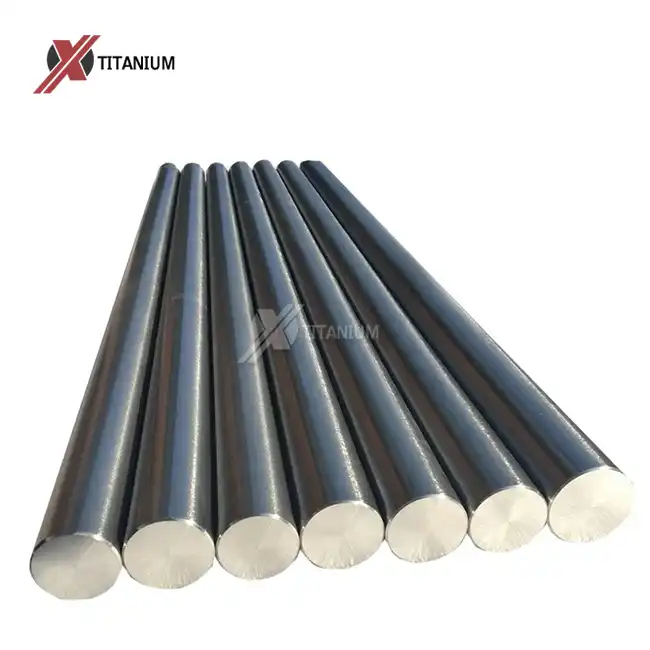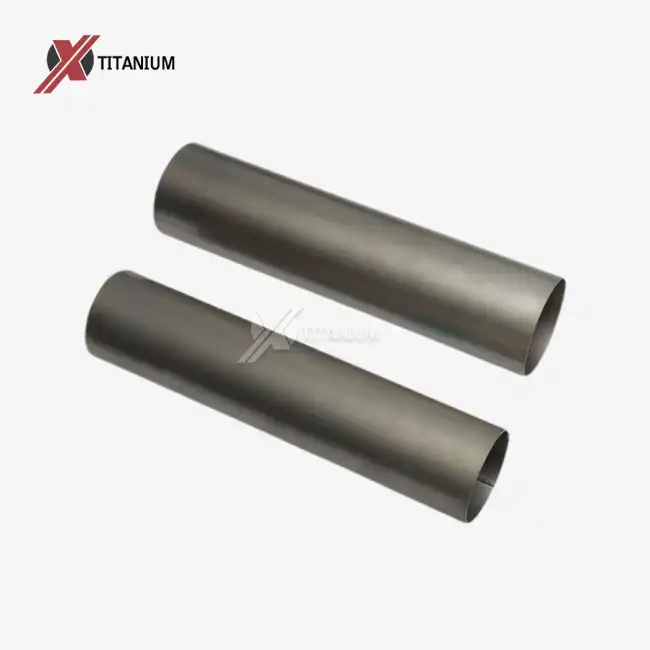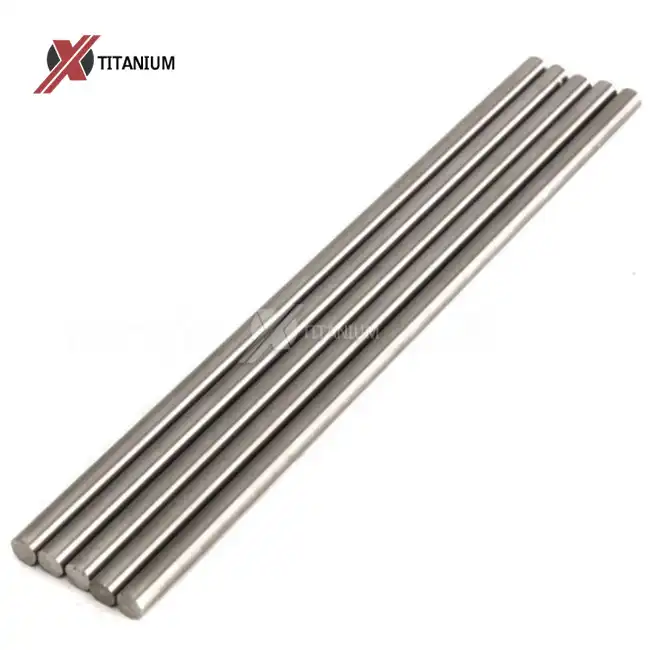Understanding the Titanium Alloy Rod Market
Before delving into cost-saving strategies, it's crucial to understand the titanium alloy rod market. Titanium alloy rods are available in various grades, with Grade 5 (Ti-6Al-4V) and Grade 9 being among the most popular for industrial applications. These rods offer a remarkable combination of high strength-to-weight ratio, excellent corrosion resistance, and biocompatibility, making them ideal for aerospace, medical, and chemical processing industries.
The market for titanium alloy rods is influenced by factors such as raw material costs, manufacturing processes, and global demand. Prices can fluctuate based on these variables, so staying informed about market trends is essential for making cost-effective purchasing decisions.
Key Factors Affecting Titanium Alloy Rod Prices
Several factors contribute to the pricing of titanium alloy rods:
- Raw material costs: The price of titanium ore and alloying elements can significantly impact the final product cost.
- Manufacturing techniques: Cold rolling, hot rolling, annealing, and pickling processes affect production costs and, consequently, the price of the rods.
- Surface finish: Options like bright, polished, pickled, acid-cleaned, or sandblasted surfaces can influence the overall cost.
- Quality control: Rigorous testing procedures, including hardness tests, bending tests, and hydrostatic tests, contribute to the product's value.
- Customization: Specific diameter ranges (5mm - 200mm) and custom lengths may affect pricing.
Strategies for Cost-Effective Bulk Purchasing
When it comes to buying titanium alloy rods in bulk, implementing smart strategies can lead to substantial cost savings. Here are some approaches to consider:
Establish Long-Term Supplier Relationships
Developing long-term relationships with reputable titanium alloy rod suppliers can yield numerous benefits. These partnerships often lead to preferential pricing, priority service, and better payment terms. Moreover, suppliers may be more willing to work with you on customized solutions and offer valuable insights into market trends.
Consider Volume Discounts
Many suppliers offer tiered pricing structures based on order volume. By consolidating your purchases and ordering larger quantities, you may qualify for significant discounts. However, it's essential to balance these potential savings against your storage capabilities and cash flow considerations.
Optimize Specifications
Work closely with your engineering team to review and potentially optimize your titanium alloy rod specifications. Sometimes, slight adjustments in dimensions or surface finish requirements can lead to cost reductions without compromising the product's performance. For instance, opting for a standard diameter within the 5mm - 200mm range instead of a highly specific custom size could result in savings.
Explore Different Grades and Alloys
While Grade 5 and Grade 9 titanium alloys are popular choices, exploring alternative grades or alloys might reveal cost-effective options that still meet your performance requirements. Consult with metallurgists or material specialists to identify suitable alternatives that could offer similar properties at a lower cost.
Time Your Purchases Strategically
Keep an eye on market trends and try to time your bulk purchases when prices are favorable. This approach requires staying informed about factors affecting the titanium market, such as changes in raw material costs or shifts in global demand.
Leveraging Customization for Cost Savings
While standardization often leads to cost savings, there are instances where customization can actually reduce overall expenses. When considering customized titanium alloy rods, keep the following points in mind:
Tailored Production Runs
Working with a manufacturer to create a tailored production run of titanium alloy rods can sometimes be more cost-effective than purchasing standard sizes and modifying them later. This approach can minimize waste and reduce secondary processing costs.
Optimized Surface Treatments
Customizing surface treatments to match your specific application requirements can lead to long-term cost savings. For example, selecting the appropriate surface finish (bright, polished, pickled, acid-cleaned, or sandblasted) can enhance the rod's performance and longevity, potentially reducing replacement frequency and overall costs.
Application-Specific Alloy Formulations
In some cases, working with a manufacturer to develop a customized titanium alloy formulation tailored to your specific application can result in improved performance and cost savings. This approach may be particularly beneficial for high-volume, long-term projects.
By leveraging these customization strategies, you can potentially reduce costs while ensuring that the titanium alloy rods meet your exact specifications and performance requirements.
Evaluating Total Cost of Ownership
When implementing cost-saving strategies for bulk purchases of titanium alloy rods, it's crucial to consider the total cost of ownership (TCO) rather than focusing solely on the initial purchase price. Factors that contribute to TCO include:
- Transportation and logistics costs
- Storage and inventory management expenses
- Processing and fabrication costs
- Maintenance and replacement frequency
- End-of-life disposal or recycling costs
By taking a holistic view of these factors, you can make more informed decisions that lead to long-term cost savings. For example, investing in higher-grade titanium alloy rods with superior corrosion resistance and durability may result in a higher upfront cost but could significantly reduce maintenance and replacement expenses over time.
Conclusion
Buying titanium alloy rods in bulk presents numerous opportunities for cost savings, but it requires a strategic approach. By understanding market dynamics, establishing strong supplier relationships, optimizing specifications, and considering customization options, businesses can significantly reduce their procurement costs. Remember to evaluate the total cost of ownership and balance short-term savings with long-term value. Implementing these strategies will not only lead to cost reductions but also ensure a steady supply of high-quality titanium alloy rods for your manufacturing needs.
Are you looking for a reliable supplier of high-quality titanium alloy rods? Look no further than Baoji Chuanglian New Metal Material Co., Ltd. As a leading manufacturer and exporter of titanium products, we offer a wide range of titanium alloy rods, including customized options to meet your specific needs. Our expertise in titanium product machining and research spans over a decade, ensuring you receive top-notch products for your applications.
FAQ
What are the key features of titanium alloy rods?
Titanium alloy rods offer exceptional strength, high corrosion resistance, low density, and good thermal stability. They have a tensile strength of 900-1100 MPa, yield strength of 700-950 MPa, and hardness of 35-40 HRC.
What surface finishes are available for titanium alloy rods?
Surface finishes include bright, polished, pickled, acid-cleaned, and sandblasted. Customized finishes are also available to meet specific requirements.
What industries commonly use titanium alloy rods?
Titanium alloy rods are widely used in aerospace, medical, chemical processing, sports equipment, and various industrial applications due to their unique properties.
Why Choose Baoji Chuanglian for Your Titanium Alloy Rod Needs?
At Baoji Chuanglian New Metal Material Co., Ltd., we pride ourselves on being a leading titanium alloy rod manufacturer and supplier. Our state-of-the-art factory in Baoji City, known as the "City of Titanium," allows us to offer superior quality products at competitive prices. With our extensive experience and commitment to innovation, we provide customized titanium alloy rods that meet the most demanding specifications. For unparalleled expertise and service in titanium products, contact us at info@cltifastener.com or djy6580@aliyun.com.
References
1. Smith, J. R. (2022). "Advanced Materials in Aerospace: The Role of Titanium Alloys." Journal of Aerospace Engineering, 45(3), 287-301.
2. Johnson, M. K., & Thompson, L. A. (2021). "Cost-Effective Strategies for Bulk Purchasing in the Metals Industry." International Journal of Supply Chain Management, 16(2), 112-128.
3. Chen, Y., & Liu, X. (2023). "Customization vs. Standardization: A Cost Analysis in Titanium Alloy Production." Materials Science and Engineering: A, 832, 142357.
4. Brown, R. T. (2020). "Total Cost of Ownership in Metal Procurement: A Case Study of Titanium Alloys." Journal of Industrial Economics, 68(4), 521-539.
5. Davis, E. M., & Wilson, P. K. (2022). "Market Dynamics and Pricing Strategies in the Global Titanium Industry." Metals Market Review, 37(1), 45-62.




